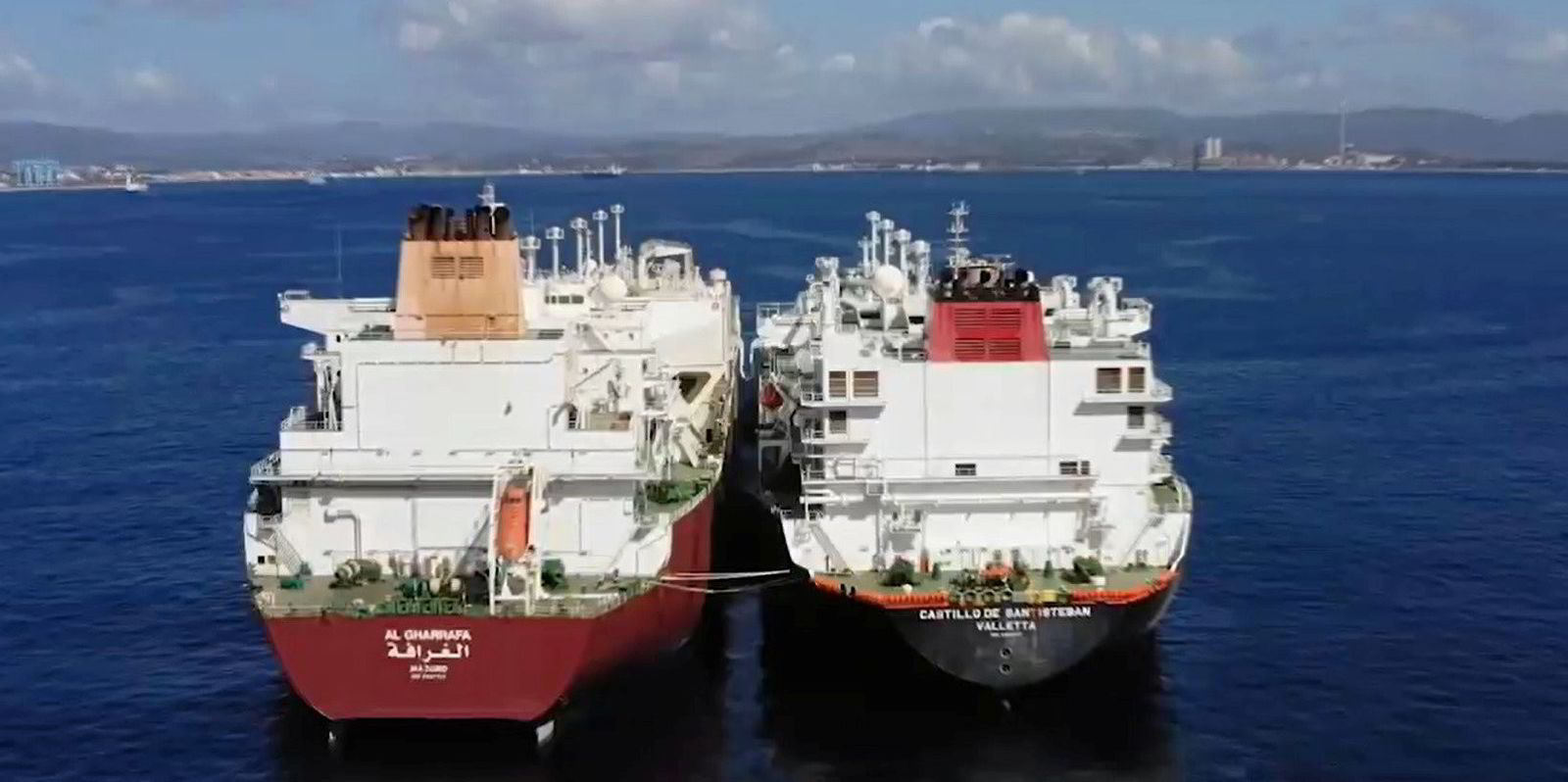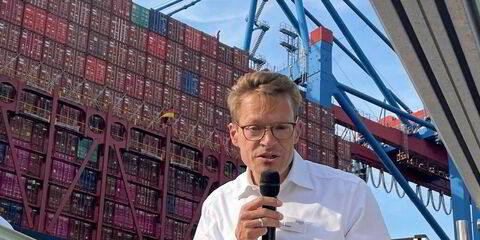LNG importer Gail (India) is talking up a cargo optimisation effort which has involved the novel use of a Q-Flex LNG carrier and is hoping to repeat the effort.
Company officials revealed that in June an LNG carrier on charter to the company from energy major Shell, the 173,673-cbm Castillo de Santisteban (built 2010), lifted a cargo from Cheniere Energy’s Sabine Pass LNG terminal in the US.
But rather than ship the cargo to India via the Suez Canal, it was discharged into a spot-chartered, QatarEnergy-controlled Q-Flex vessel, the 216,224-cbm Al Gharrafa (built 2008), which was in ballast on a backhaul voyage, in a first of its kind ship-to-ship transfer operation off Gibraltar.
The Q-Flex then shipped the volumes to the Dahej terminal in India.
A Gail official told TradeWinds said that the operation resulted in a “significant saving” in shipping shaving between 8,000 to 9,000 nautical miles off the distance in total and with a saving of around 3,700 nautical miles for the company overall.
He detailed that an India to Sabine Pass round voyage is about 20,000 nautical miles and QatarEnergy’s return trip to Europe is 13,000 nautical miles stacking up at 13,000 nautical miles totalling 33,000 nautical miles.
But with the STS and use of the Qatari ship as backhaul, and including Gail’s return ballast return let to Sabine, it stacks up at 24,000 nautical miles overall.
He added that the voyage also resulted in “quite substantial” financial savings and saved “1,000s of tonnes of CO2 saved”.
Gail claims this was the first time an LNG cargo has been transferred from a conventional-sized LNG carrier into a Q-Flex capacity vessel in what was a commercial operation.
Company officials told TradeWinds that point-to-point LNG shipments can prove “quite expensive” for a price-sensitive country like India.
Instead, Gail attempts to optimise its shipments by different methods, including using its own chartered-in tonnage.
They described the operation with the Qatari vessel as “something unique” and a “win-win for both parties”.
“We intend to scale it further,” the Gail official said. “It is an optimisation tool that we have developed and we want to use it again.”
Gail’s portfolio of LNG volumes is around 14 million tonnes per annum, which the company said ranks it as one of the top 10 buyers globally. Out of this 5.8 mtpa has been brought on a free-on-board basis from the US.
The company currently has four LNG carriers on time-charter for minimum periods of one year up to seven years hire.





